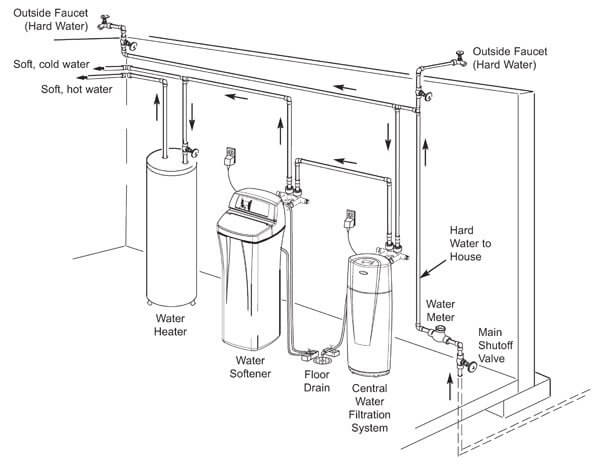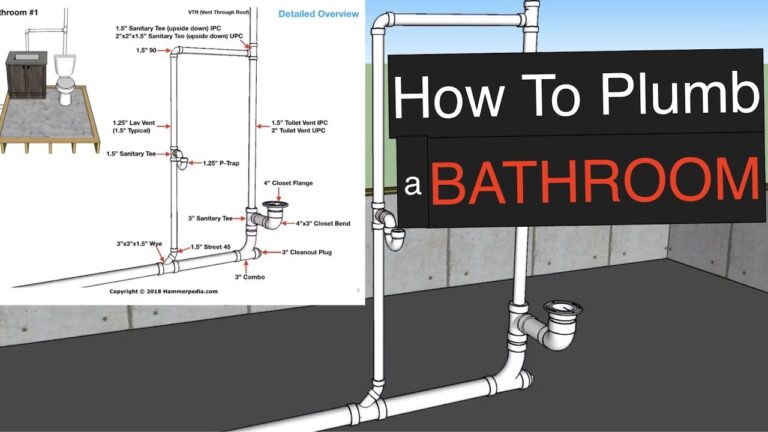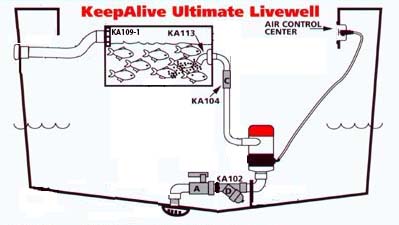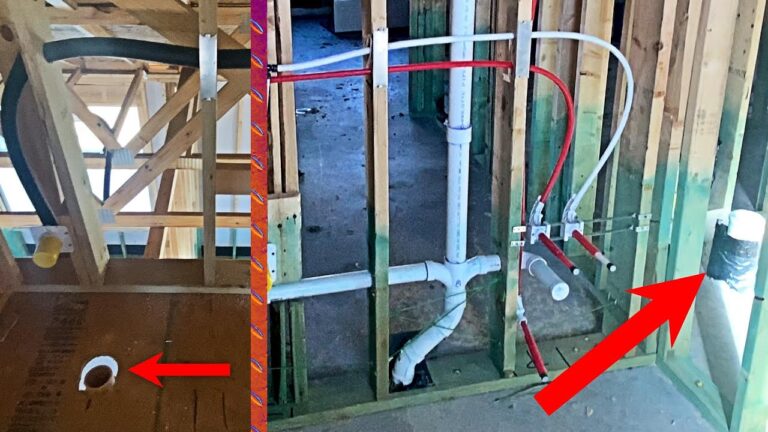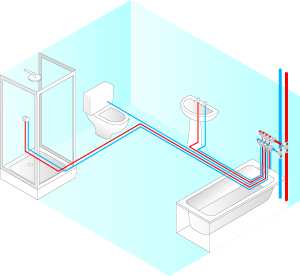Which Plumbing Device Helps Prevent Backflow?
Backflow prevention devices are an important part of any plumbing system. They are designed to prevent the reverse flow of contaminated water into a home or business’s water supply. Backflow prevention devices are used to protect the quality of drinking water and to prevent the spread of contamination. They are typically installed on water supply lines leading to a building or residence, and they work by controlling the flow of water. Common types of backflow prevention devices include check valves, air gaps, and reduced pressure zones. Each type of device can help protect against backflow, depending on the needs of the plumbing system.
Definition of Backflow
Backflow is a process in which water that has been used for a certain purpose flows back or reverses direction. This can occur within a plumbing system when the pressure of the water supply is lower than the pressure of a system connected to it, such as a sprinkler system or swimming pool. Backflow can also occur when there is a sudden loss of pressure in the water supply, or when a check valve fails. In these cases, the water can travel back into the main water supply, potentially contaminating it with whatever substances were in the connected system. Therefore, it is important to have an adequate backflow prevention system in place to protect the water supply.
Plumbing Devices Used to Prevent Backflow
Backflow is the undesirable reversal of flow of liquid in a plumbing system, which can occur when there is a sudden change in pressure within the system or when there is a malfunction of the system. To prevent backflow, plumbing devices are used. The most common backflow preventer is the check valve, which is designed to allow fluid to flow in one direction only, thus preventing backflow. Other devices include vacuum breakers, pressure regulators, and double check valves. These devices are designed to ensure that the flow of fluid is kept in the desired direction and to protect the system from contamination. All of these devices work to maintain the health and safety of the plumbing system by preventing backflow and ensuring that the water is flowing in the direction that it is meant to.
Benefits of Installing a Backflow Prevention Device
Installing a backflow prevention device is an essential part of protecting your home from water contamination. By preventing backflow, these devices effectively protect your water supply from being contaminated by pollutants and other hazardous substances that could be present in the water supply. Not only do they provide peace of mind, but they also help improve the quality of water for drinking, bathing, and all other uses. In addition, these devices can save you money in the long run by preventing costly repairs to your plumbing system. Installing a backflow prevention device is a smart investment in the health and safety of your family and the environment.

Different Types of Backflow Prevention Devices
Backflow prevention devices are essential for ensuring that water is not contaminated in a plumbing system. They can be used to protect drinking water, industrial systems, and irrigation systems from harm. There are several different types of backflow prevention devices available, each with its own advantages and disadvantages. Pressure Vacuum Breakers (PVBs) are the most common type, as they are relatively inexpensive and easy to install. Double Check Valves (DCVs) provide more protection than PVBs, but are more expensive and require professional installation. Reduced Pressure Principle (RPZ) devices are the most secure type and are ideal for high-risk applications, but are very expensive and require frequent maintenance. Ultimately, the type of device you choose will depend on the application and your budget.
How to Install a Backflow Prevention Device
Installing a backflow prevention device is a vital step to ensure that your home or business’ water supply is safe and free from contaminants. Backflow prevention devices work by preventing cross-connections between an outside water source, such as a public water supply, and your internal plumbing. This is important to protect your drinking water and prevent potential contamination. Installing a backflow prevention device isn’t complicated, but it does require some technical knowledge. First, you’ll need to choose the right device for your system, then purchase the necessary components and tools. Next, you’ll need to identify the correct location on your property where the device should be installed. After that, the actual installation process can begin. It’s important to follow the manufacturer’s instructions to ensure your device is correctly installed. Finally, it’s important to regularly test and maintain your device to ensure it is working properly. Installing a backflow prevention device is an important step to ensure your water supply is safe and free from contaminants. With the right knowledge and tools, you can quickly and easily install a device that will keep your water safe and secure.
Troubleshooting Backflow Prevention Devices
Backflow prevention devices are designed to protect potable water supplies from contamination or pollution due to backflow. In the event of a backflow situation, these devices can help to protect public health and safety by preventing the backflow of contaminated water into the public water system. Troubleshooting backflow prevention devices is a critical part of maintaining a safe and reliable water supply. It is important to have the proper knowledge, tools, and experience to properly diagnose and repair any issues that may arise. This article will provide an overview of backflow prevention devices, explain why they are important, and provide tips for troubleshooting and repairing various types of backflow prevention devices. By understanding the basics of backflow prevention, you can help ensure that your water supply is safe and reliable.
FAQs About the Which Plumbing Device Helps Prevent Backflow?
1. What is a backflow preventer?
A backflow preventer is a plumbing device that is designed to keep contaminated or non-potable water from flowing back into the drinking water supply. It is a check valve that prevents the reverse flow of water.
2. Why is a backflow preventer important?
Backflow preventers are important because they help protect drinking water from potential contaminants. Without a backflow preventer, contaminated water could enter the drinking water supply, exposing people to potentially hazardous materials.
3. How does a backflow preventer work?
Backflow preventers are designed to allow water to flow in one direction only. A check valve is installed in the plumbing system to prevent the backflow of water. The check valve is designed to close when the flow of water reverses, preventing contaminated water from entering the drinking water supply.
Conclusion
The plumbing device that helps prevent backflow is a backflow preventer. Backflow preventers are an essential component in any plumbing system and help to protect the water supply from contamination by preventing water from flowing back into the supply lines. By preventing backflow, these devices help ensure that the water we use is clean and safe.


